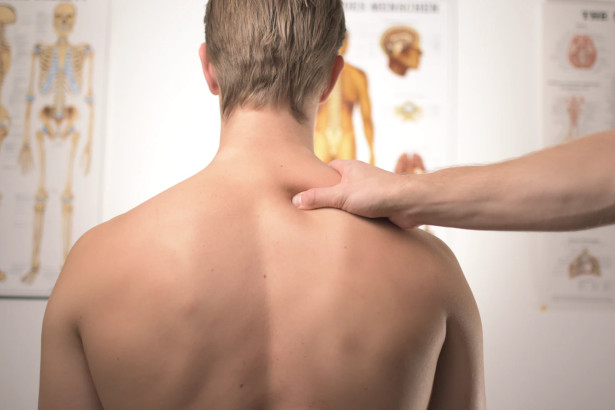Post-Match Recovery: From Cryotherapy to Massage

>>> Photo
As one of the world’s most popular sports, the verdict is in on rugby: sports fans like a bit of contact. Though the sport shares similarities with the US’s version of football, rugby athletes wear less gear than their American football counterparts.
As such, injuries abound in the rugby league and rugby union. A study led by Auckland University found that the average rugby player experienced 1.6 injuries per season for elite players, and 0.9 for amateur professionals. For top clubs, seeing a star player land on the injured reserve is enough to set their squad off-course for important matches.
Pundits and analysts working for sportsbooks follow player injuries before making their predictions. Backing a team that’s lacking on a Beauden Barret or an Owen Farrell may work for a free bet offered by bet365 or another sportsbook, as the chances of the Blues or Saracens taking a big cup win injured leaders are low.
As such, each club diverts ample resources to keep their top players from succumbing to injury after each match. From basic nutrition to neurological conditioning, clubs from PRO14 to Super Rugby to Gallagher Premiership fight to keep the edge on their opponents.
But what techniques do each club use post-match to help each athlete recover? Aside from the standard fare like ice packs and electrolytes, top rugby trainers and physical therapists aren’t afraid to get creative.
MEAT Treatment or ‘Active Recovery’
Most athletes are familiar with the RICE program, which is designed to help the body recuperate after a grueling workout. RICE stands for rest, ice, compression, and elevation—which are helpful for long-term recovery.
However, rugby players need to be in game-condition in a relatively short turnaround. That means RICE’s long-term benefits aren’t quite as applicable to an athlete who continuously throws themselves into carnage.
One alternative used by rugby teams is MEAT, which stands for movement, exercise, analgesia, and treatment. Movement, rather than rest, encourages the body to manage pain for acute injuries (though it can be a tightrope balance). Exercise is designed to help encourage muscle elasticity post-workout.
Both movement and exercise in the context of MEAT are minimal compared to standard workouts. Analgesia describes topical treatments for pain removal, like Icy Hot. Typically, non-steroidal treatments like Ibuprofen are offered to athletes with post-match fatigue or aches, but analgesics allow the body to tackle inflammation naturally.
The final portion of MEAT stands for treatment, which should be tailored to each specific athlete. These treatments could include specific supplements or additional compression or massage.

>>> Photo
Cryotherapy
The ice bath is no stranger to any hardened athlete. Jumping into an ice bath immediately post-workout includes benefits such as reducing soreness, aiding sleep quality, and shortened recovery time. However, scientific studies have yet to conclusively point to biological improvements based on ice baths.
Contrast showers seem to be slowly replacing the iconic ice bath of locker rooms. Used by teams like South Africa’s Springboks, contrast temperature therapy is one major component that helps reduce inflammation in the body while lessening edema and bruising of the blood vessels.
One study conducted by exercise science specialists indicated that players who engaged in contrast temperature therapy versus active recovery put forth by MEAT showed a decrease in lactic buildup and had lower heartrates. Still, contrast temperature therapy remains a relatively new form of recovery therapy.
Compression
Rugby-specific compression materials are a standard feature in any club locker room worldwide. During workouts, they provide extra support for joints, and may even boost an athlete’s coordination. The benefits of compression materials post-workout include reducing swelling and helping to remove toxic buildup in muscles.
By reducing the movement of recovering areas, soft tissue is able to realign and regain mobility at a faster rate. Rugby athletes who utilized compression gear immediately following a match showed comparable recovery to those treated with MEAT and contrast temperature treatment.
Much like contrast temperature therapy, compression therapy is relatively new. The application of compression materials should be overseen by a professional, as it must be worn for at least 72 hours to be effective, but also shouldn’t prevent blood flow

>>> Photo
Massage
Massage is one of the greatest tools in a physical therapist’s repertoire when working with rugby players. Various forms of massage help to reduce edema and pain, remove blood lactate buildup, and increase blood (and, therefore, oxygen) flow to help muscles recover.
However, it seems that massage is primarily used to help reduce pain, as scientific studies have yet to show that massage improves muscle function. Depending on the athlete, their injury, and the physical therapist tending them, the duration and frequency of massage vary.
The average rugby player faces disproportionate risks of hamstring strains, thigh hematomas, and other ligament injuries, which can be addressed through massage. Additionally, massage can help address issues like tendonitis and shin splints.
Flossing is one way to administer rugby massage, either alone or with a physical therapist. Flossing involves using an elastic band to target pressure to a specific area. Within a few minutes of continuous work, flossing addresses soreness and fatigue of soft tissue.
Calming the Brain & Refueling the Body
Two major components of rugby relate to the mind and the body. First, the body should be robust and rugged enough to endure full-contact tackles. Second, the mind should be sharpened with a competitive edge that separates all-stars like Semi Radradra and Maro Itoje from the pack.
In terms of refueling the body, rugby stars need more than carbs, protein, and electrolytes. In particular, most physical therapists will target join recuperation as part of a post-match recovery plan. To do this, they recommend taking supplements like curcumin, Boswellia serrata, chondroitin, vitamin C, and the all-powerful fish oil.
However, recovering the body of a top rugby athlete doesn’t occur without also addressing their state of mind. Though each player has their own routine to help ratchet their concentration and decision-making during a match, most are beginning to also define a ‘come down’ routine to settle their minds after a game.
In addition to causing muscle contractions, remaining ‘on’ after the game can keep the nervous system in a state of hyperawareness. By calming the body through active recovery, the nervous system can re-integrate to normal levels of alertness.









